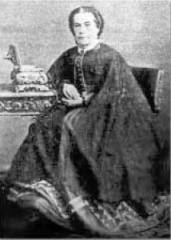University of Otago Christchurch campus works
Kia ora,
Earlier this year, ahead of the start of construction of a new six-storey building on the University of Otago's Christchurch campus, a team from our archaeological research and consultancy unit at the University, Southern Pacific Archaeological Research (SPAR), undertook an archaeological salvage excavation on the site. The excavation was one of the conditions of an archaeological authority for the construction works that had been granted to the University by Heritage New Zealand Pouhere Taonga.
In New Zealand, these authorities are a legal requirement where there is reasonable cause to expect that earthworks will affect archaeological evidence associated with pre-1900 AD human activity. In the present instance, the site is located on Oxford Terrace in Christchurch along the Avon River, right in the heart of the earliest occupied part of the Canterbury Association's Church of England settlement (which was founded in 1850 AD). Archaeological work undertaken in the central city during the rebuild following the Christchurch Earthquake in 2011 has produced an enormous amount of archaeological evidence of life in the earliest days of Christchurch. Not to mention that the area along the Avon River, known as Ōtākaro in Te Reo Māori (the Māori language), had been a significant travel route and food resource for Māori in the area for centuries prior to the establishment of the Christchurch settlement. An assessment of the archaeological potential of the site completed by SPAR last year found that alongside other small businesses operating in the 1800s the site had once been the location of the Christchurch Ladies' School, opened in 1854 by early Christchurch settler Maria Thomson. While the Canterbury Association had included amongst the attractions to their new settlement a fee-paying high school for the sons of the well-to-do (Christ's College), equal consideration does not appear to have been given to their daughters and it was left up to a private citizen (Maria Thomson) to fill that demand.
True to form for central Christchurch over the last decade, our team uncovered an enormous amount of archaeological evidence, including still partially intact building foundations and a massive sample of Victorian-era artefacts recovered from the many rubbish pits on site (prior to cleaning and repacking the sample filled more than seventy 57L plastic storage containers!).
Since its completion in April, the archaeological excavation at the Oxford Terrace site has attracted attention from national and international media. An interesting (and fun!) angle of this media coverage has been the focus on the discovery of several small (and admittedly creepy looking!) single piece porcelain figurines. These initially German manufactured figurines were generally known in the English speaking world as "penny dolls" in the 1800s (reflecting the price for which they sold) and later (from the 1940s) "Frozen Charlottes" (after a rather macabre popular poem about a vain young girl who refused to cover up on a cold evening and froze to death during an open sleigh ride).
 |
| Some of the porcelain figurines as they looked when they first came out of the ground. Photo taken on site by SPAR archaeologist Monica Tromp and supplied to Stuff. |
.jpg) |
| A selection of the porcelain figurines from the Oxford Terrace site after cleaning. Image produced by SPAR archaeologist Tristan Russell. |
In the meantime, cleaning of the tens of thousands of other excavated artefacts has continued in the University of Otago's Archaeology Laboratories. Finds include complete & incomplete glass, metal, & ceramic items, as well as lots of pieces of wood and fabric (which are generally not as commonly preserved in the archaeological record). Everything - not just the nice or unusual stuff - has been cleaned and retained for cataloguing and inclusion in a detailed final report on the archaeological investigations that will be submitted to Heritage New Zealand Pouhere Taonga at the completion of the analysis. These results, along with those of the many other archaeological investigations that have been undertaken in central Christchurch over the last decade, will contribute to a fairly comprehensive picture of everyday life in the earliest days of the Christchurch settlement.
 |
| Cleaning of artefacts from the Oxford Terrace site in progress in the University of Otago's Archaeology Laboratories. Photo taken by author. |
 |
| Trays containing freshly cleaned glass, ceramic, and metal artefacts (top) and pieces of shoes, wood and fabric (bottom) from the Oxford Terrace site. Photos taken by author. |
Click here to read about another huge recent archaeological investigation in central Christchurch. And for those that are interested in reading even more about the archaeology of early Christchurch, check out 'The City Remains', a blog by a couple of archaeologists and current PhD candidates who are incorporating some of the incredible wealth of post-earthquake archaeological data from the city into their respective PhD projects.
Nick





Comments
Post a Comment